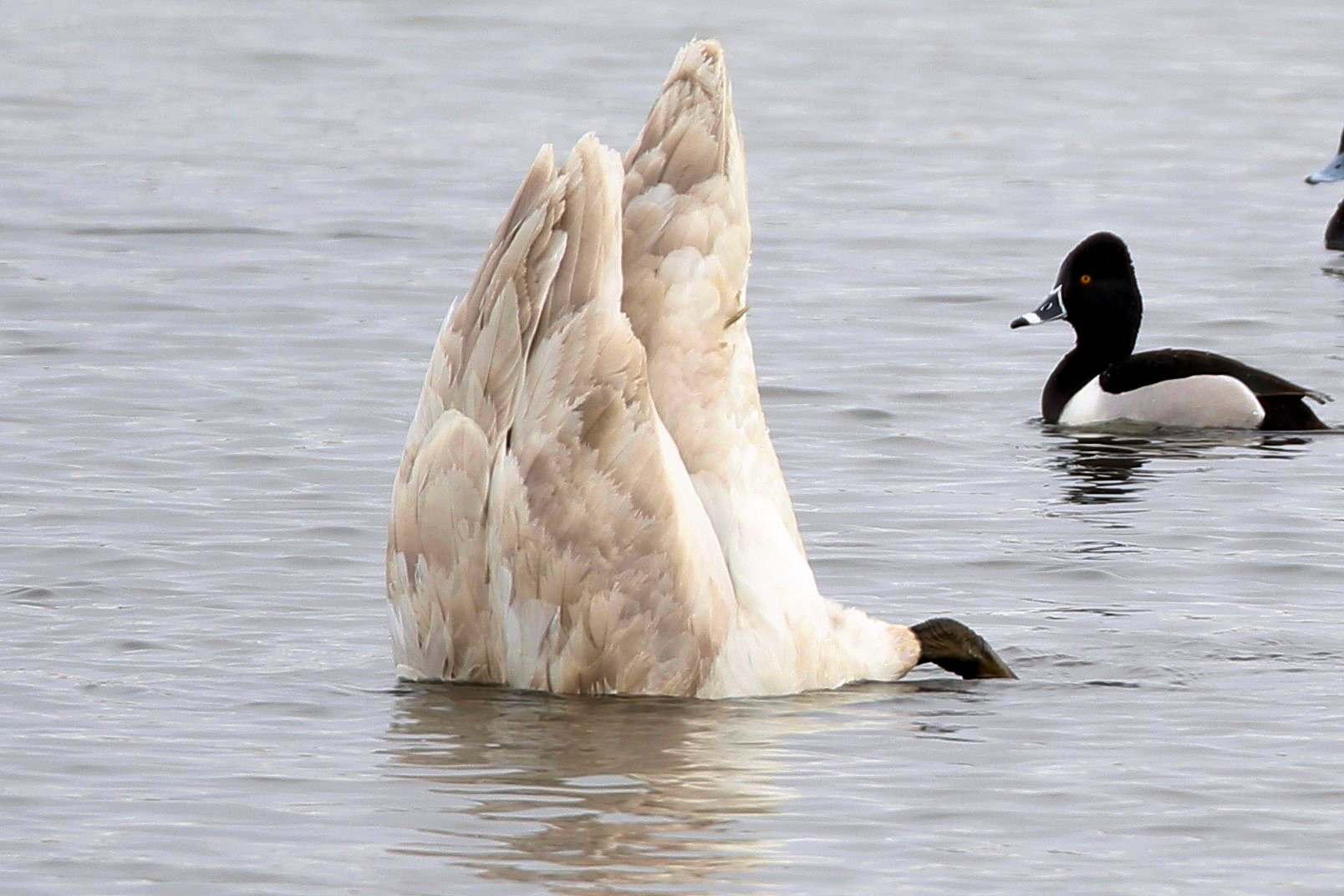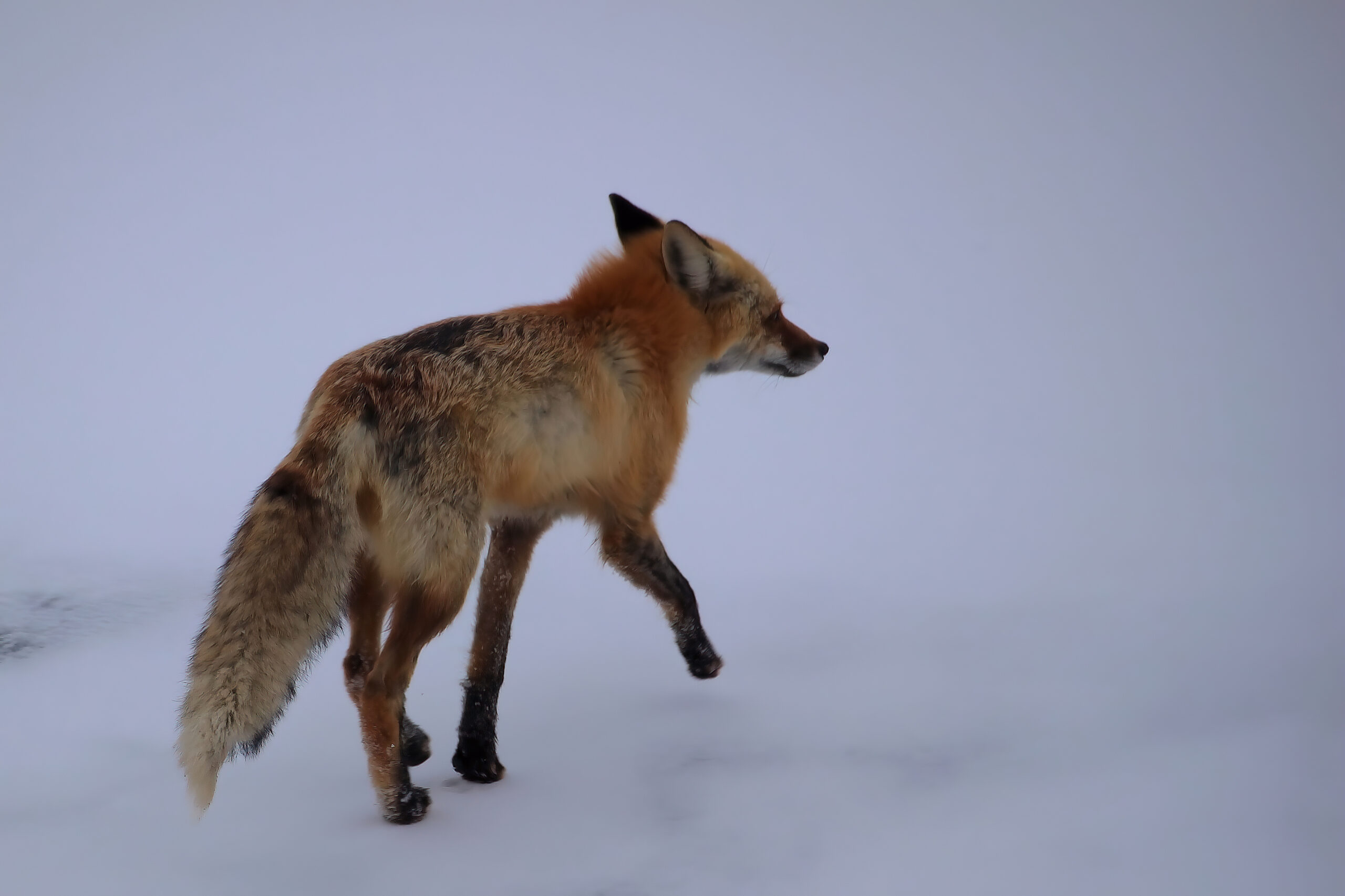Once open water is available on Lake Chestermere, nature lovers in the city have fine opportunities to enjoy both Trumpeter and Tundra Swans. With water drained to the lowest levels, it’s the melt water that provides enough depth for wildfowl to both float and forage. Early arrivals to the north end of the lake include Redheads, Common Goldeneyes, Lesser Scaups, Mallards, a few Buffleheads and American Wigeons. The swan species arrive about a week after, once the north end of the lake has lots of open water.
The relationship between the duck species and the swans becomes apparent to the wildfowl watcher when it’s lunchtime on the lake. The length of a swan’s neck is generally the same length as its body. Imagine having a body up to six feet (182cms) and a neck to match! The advantage of a long neck provides is the ability to access vegetation at greater depths. A typical duck neck length may be just over an inch (3cm). Some duck species of course can tip like teapots to dabble and gather bottom vegetation. Diving ducks are more successful in reaching food sources at greater depths when compared to dabblers. Swans however are in a league of their own in reaching lake or slough bottom vegetation. Not only do those long necks enable access to vegetation in deeper water, but swans will also use their large, webbed feet to create water currents to free up roots from the surrounding spring mud, present in Lake Chestermere.
This past Saturday nearly two dozen swans, mostly Trumpeters, were enjoying the sunshine, open water and spending a lot of time with the necks doing the work to forage for last years vegetation growth. Almost every swan was accompanied by a few ducks, each waiting patiently for that “free lunch” provided by the swan. Amazingly, Lesser Scaups will dive directly under a feeding swan to capture some of the nutritious vegetation set free by that swan. In other instances, a group of three or four ducks will crowd around the swan, risking being stepped on at times. American Wigeons, Redheads and Mallards can be sent waiting around a swan that is using its feet to kick up as much edible matter as possible. Each quickly snaps up what it can before the swan itself consumes its “catch”.
You may wonder how to tell the difference between the two species of swan on Lake Chestermere. Generally, Trumpeters are larger, have a heavier neck that droops from its base, and sports a larger, wedge-shaped bill. Of note, the area where the bill meets the head is V-shaped on a Trumpeter, while the shape is more like a “U” on the Tundra Swan. Listening to swan calls can also be helpful. Trumpeters have a loud bugle or trumpet-like call that sounds gentle, while the Tundra Swan emits a high-pitched, whistling call.
Early Sunday morning as I sipped my coffee, nearly forty swans left the Lake, heading north to continue their journey. The “free-loaders” had lost their meal tickets. Quack!
Are Ducks Freeloaders?

In response to Canada's Online News Act and Meta (Facebook and Instagram) removing access to Canada's local news from their platforms, Anchor Media Inc encourages you to get your news directly from your trusted source by bookmarking this site and downloading the Rogue Radio App. Send your news tips, story ideas, pictures, and videos to info@anchormedia.ca.









Add Comment